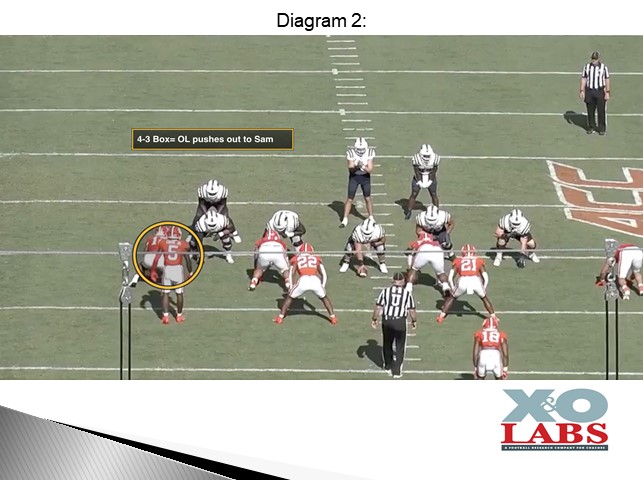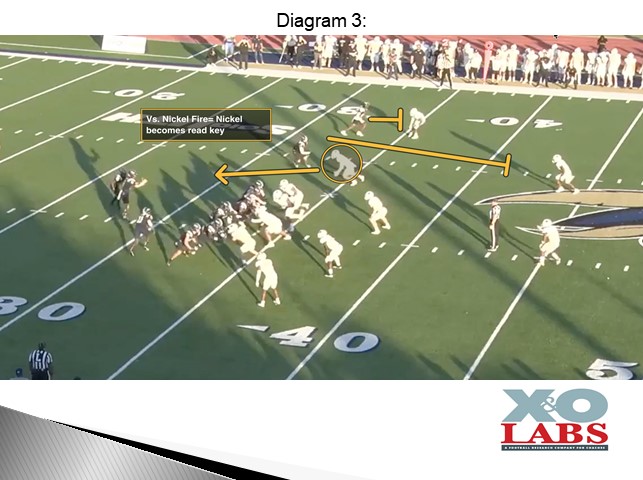By Mike Kuchar with Adam Hollifield
Offensive Coordinator/Offensive Line Coach
Charleston Southern University (SC)
Twitter: @CoachHollifield
At Charleston Southern, the Slide RPO is built on inside zone principles. The offensive line will identify the five box defenders and work off them. But while it’s built off tight zone, the actual fundamentals for the offensive line are more similar to outside zone footwork. In fact, the play side of the concept blocks a tight zone track, and the backside of the concept blocks a wide zone track. This allows for the horizontal stretch needed to get the defense to move opposite the slide. “With the backside Guard and Tackle in a cutoff phase it puts the C gap player in a bind because he needs to squeeze hard,” said Coach Hollifield. “If he doesn’t squeeze hard we are going to get him kicked out on split zone on vertical concepts. When he does squeeze hard we get into our slide RPO.

Any uncovered offensive linemen in this scheme are taught what Coach Hollifield calls a “KTC Rule,” which means they will either “Knock Over,” “Take Over” or “Climb” to the second level. “We key the near hip,” said Coach Hollifield. “If it comes to me I K.T.C. If it goes away I climb.” He talks about “biting apple off the play side shoulder” of the defender. “We want to be both lateral and vertical up front with our shoulders squared,” he said. “This way we give our running back a two-way go.”
If a defense stays stagnant it turns more into a vertical push on the front side and backside. When defenses start slanting or back gapping, he tells his linemen to keep their eyes flat and try to push the ball front side. “We don’t chase anything backside across our face,” he said. “Our rule is to block our play side Gap to our linebacker. We want our line to block the first level while our back reads the second level.”
As far as communication goes, the play side linebacker is the point except in a 4-3 box. In that situation, the read gets pushed out to the Sam linebacker.

QB/RB Mesh:
Since installing the scheme in 2019, Coach Hollifield has transitioned into more of a mid-zone track for the back, despite the run blocking being a more tight zone play side. The aiming point for the back is the inside leg of the play side Guard. One of the coaching points Coach Hollifield has used is to slow up the back on the exchange. “He doesn’t take his first step until the quarterback catches the ball,” he said. “That allows us ample time to read on the backside.”
The quarterback is taught to ride and throw unless it’s automatic pressure. Then he reads the blitz angle. if he’s up the field, hand the ball off. “If he chases the dive on the heel line, the quarterback should pull and pitch on the perimeter,” said Coach Hollifield.

If the quarterback gives the ball and the run portion of the play is activated, the back reads the first linebacker in the box. If he presses downhill, the ball will press and cut back. If the LB’s back gap, the ball is pushed front side into the play side A gap, B gap and C gap. The ball can hit anywhere from the play side C gap to the backside C gap on the dive element.









